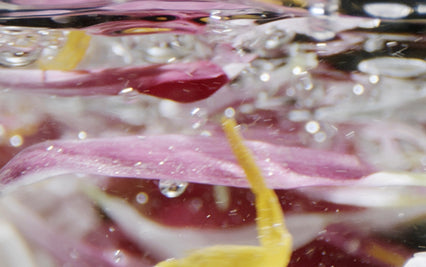Clean. It’s a word that the beauty industry and consumers are hearing now more than ever. Whether it’s a retailer adding an official clean certification to their product lineup or new brands on the horizon, clean beauty is everywhere. The truth of the matter is that finding your ideal skincare routine is a journey, and sometimes a long one. For those thinking of transitioning to a clean and non-toxic routine, that journey can be even longer. Whether the switch is for environmental purposes or to address certain skincare concerns, there are some things to know before going ahead and making the jump. When conceptualizing Furtuna Skin, I knew that the products had to come from clean and potent ingredients for them to be efficient and potent. Here’s what you need to know.
Why Make the Change?
First ask yourself, why not? Today’s consumer is significantly more invested in ingredients, formulation, and more. If you’re going to put something on your skin, you should absolutely know and understand what’s in those products. Harsh ingredients and chemicals have the power to a) make your current skincare concerns worse or b) cause entirely new concerns that weren’t an issue before. A very important statistic to note is that up to 60% of chemicals applied topically on the skin can enter the bloodstream--leaving room for a plethora of concerns. Not all ingredients are safe, which I'll dive into later in this post as well.
Know the Difference
An easy mistake to make is assuming that all-natural products are clean and non-toxic. Unfortunately, they’re not all one in the same and just because an ingredient is labeled as natural doesn’t mean it’s safe. To be as cautious as possible, look out for products and ingredients that are labeled as non-toxic. As long as a product is formulated without harmful chemicals and ingredients, it’s safe to use.
Take It Slow
You don’t have to rush into swapping everything on your vanity immediately. My suggestion is that you start off by switching one product on your shelf to another and see how it works out for you for a few weeks. Continue to do this with each step in your skincare routine until you feel comfortable enough to fully switch over with products that you like. It’s all about trial and error, and like I mentioned before, this will take time. Just be patient and use it as an opportunity to learn more about your skin.
Ingredients to Avoid
- Fragrance: While it’s for scent purposes, fragrance can be a lot more dangerous than it sounds. Brands don’t have to disclose what’s inside fragrance, making this an easy loophole for a ton of chemicals you wouldn’t want on your skin. Fragrance can cause allergies, inflammation, and more.
- Phthalates: Commonly used for allowing products to stick to our skin, phthalates increase the flexibility of plastics found in some beauty products. If you’ve kept up with cosmetics news, then you’ll know that Congress actually banned several phthalates from children’s products. This has not been enforced across all beauty products.
- Parabens: You’ve heard this one before, and thankfully a lot of brands have made it a point to not include parabens in ingredient lists. Parabens help preserve the livelihood of products, but they have also been linked to breast cancer.
- Propylene Glycol: One of the most common skin irritants found across beauty products. Propylene Glycol can cause everything from breakouts to hives to more long-term issues such as dermatitis.
- Sulfates: Sodium Lauryl Sulfate and Sodium Laureth Sulfate (or SLS and SLES) are known for clogging pores, causing breakouts, along with triggering different kinds of allergic reactions.
The biggest takeaway I would like for all of you after reading this is that it takes time, but it’s worth it. At the end of the day, we all want radiant, supple, and healthy skin. That won’t be possible to achieve by damaging our skin with harmful ingredients. It’s also not worth taking the risk of allowing these products to affect our health well beyond our skin. Read the labels, research the ingredients, the company and make swaps periodically.












Comment